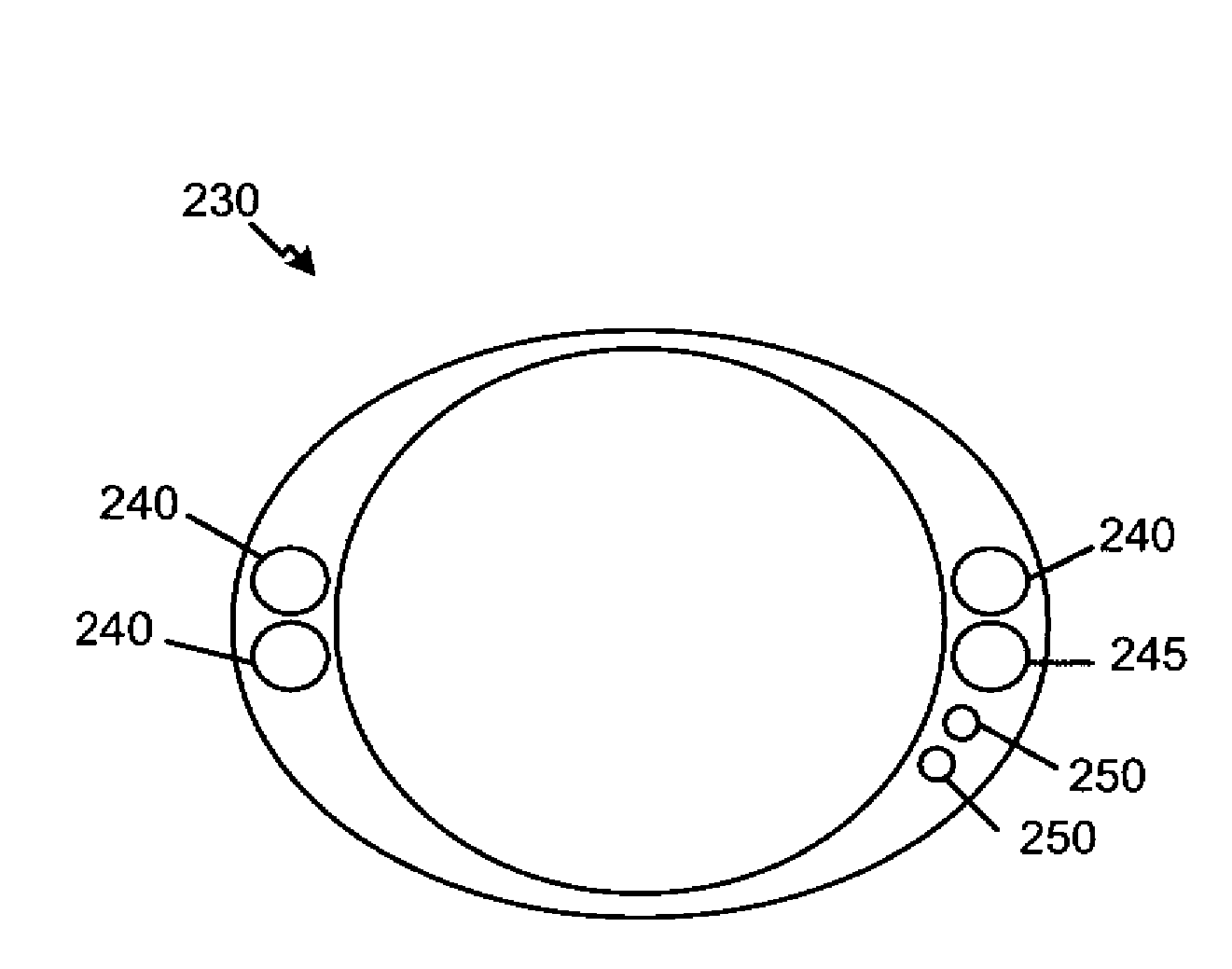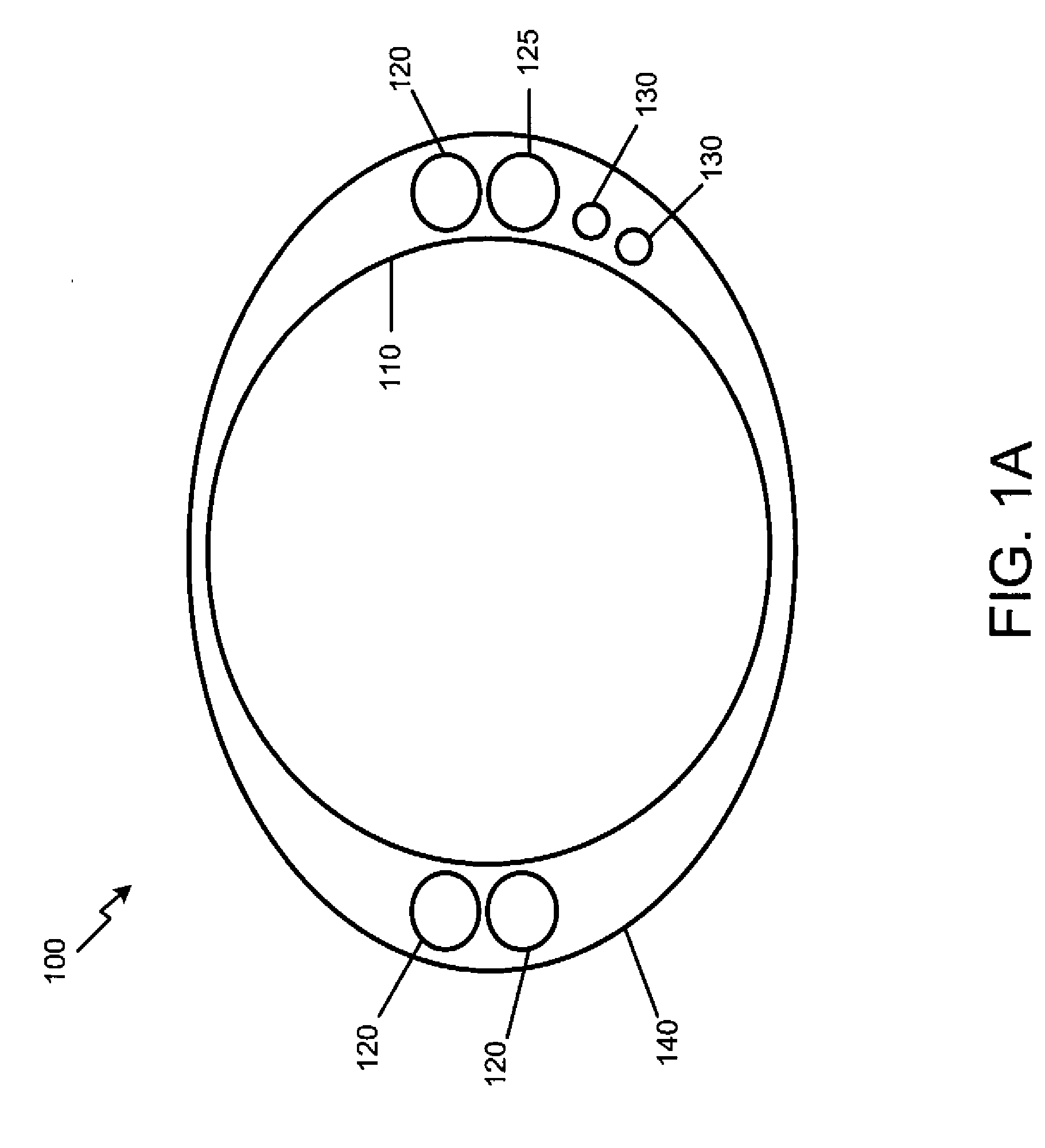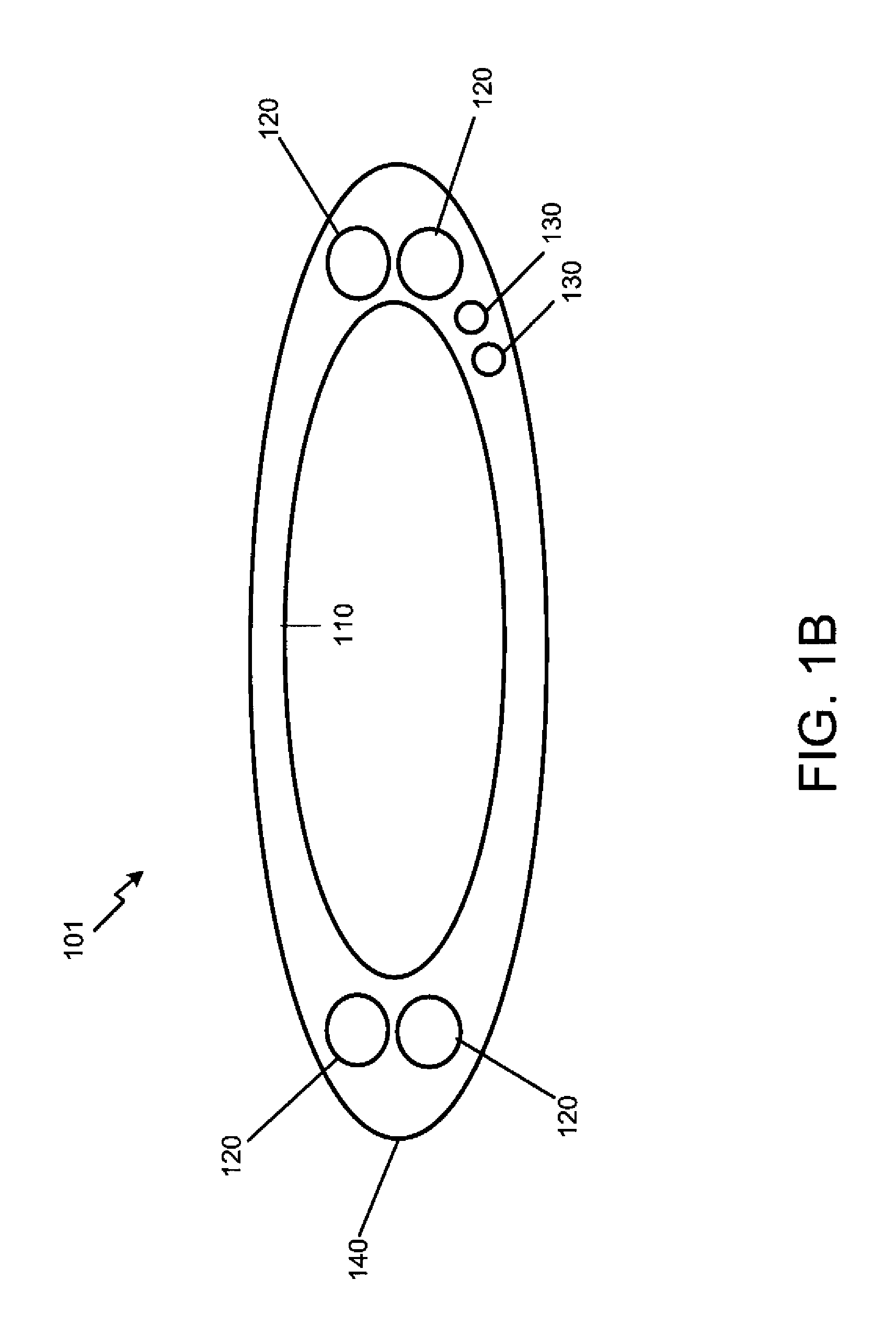Method and System for Fluid Transmission along Significant Distances
a fluid transmission and significant distance technology, applied in the direction of insulated cables, transportation items, insulated conductors, etc., can solve the problems of increasing the pump pressure to increase the downstream fluid pressure, reducing the fluid pressure, and eventually becoming inconsequential,
- Summary
- Abstract
- Description
- Claims
- Application Information
AI Technical Summary
Benefits of technology
Problems solved by technology
Method used
Image
Examples
Embodiment Construction
[0048]FIG. 1A is an illustration of a cross-section of a conduit, in accordance with a first exemplary embodiment of the present disclosure. FIG. 1A shows a cross section of a conduit, such as a fire hose or a rigid or semi-rigid pipe, combined with insulated electrical power wires 120 and communication wires 130, which will be referred to hereinafter as a wired fluid conduit (wfc) 100. The wired fluid conduit 100 can take the form of a wired fluid hose (wfh) 101, or a wired pipe (wp), each of which are defined by the material and characteristics of the conduit. FIG. 1A shows a cross-section of the wired fluid hose 101 when it is full of water and in its expanded mode. FIG. 1A also shows a cross-section of the rigid or semi-rigid wired pipe. Three power wires 120 supply three-phase electrical power and a fourth wire supplies a ground wire 125, although single-phase power may be similarly provided. The communication wires 130 may be used to support an Ethernet type of data network an...
PUM
| Property | Measurement | Unit |
|---|---|---|
| voltage | aaaaa | aaaaa |
| currents | aaaaa | aaaaa |
| power | aaaaa | aaaaa |
Abstract
Description
Claims
Application Information
 Login to View More
Login to View More - R&D
- Intellectual Property
- Life Sciences
- Materials
- Tech Scout
- Unparalleled Data Quality
- Higher Quality Content
- 60% Fewer Hallucinations
Browse by: Latest US Patents, China's latest patents, Technical Efficacy Thesaurus, Application Domain, Technology Topic, Popular Technical Reports.
© 2025 PatSnap. All rights reserved.Legal|Privacy policy|Modern Slavery Act Transparency Statement|Sitemap|About US| Contact US: help@patsnap.com



